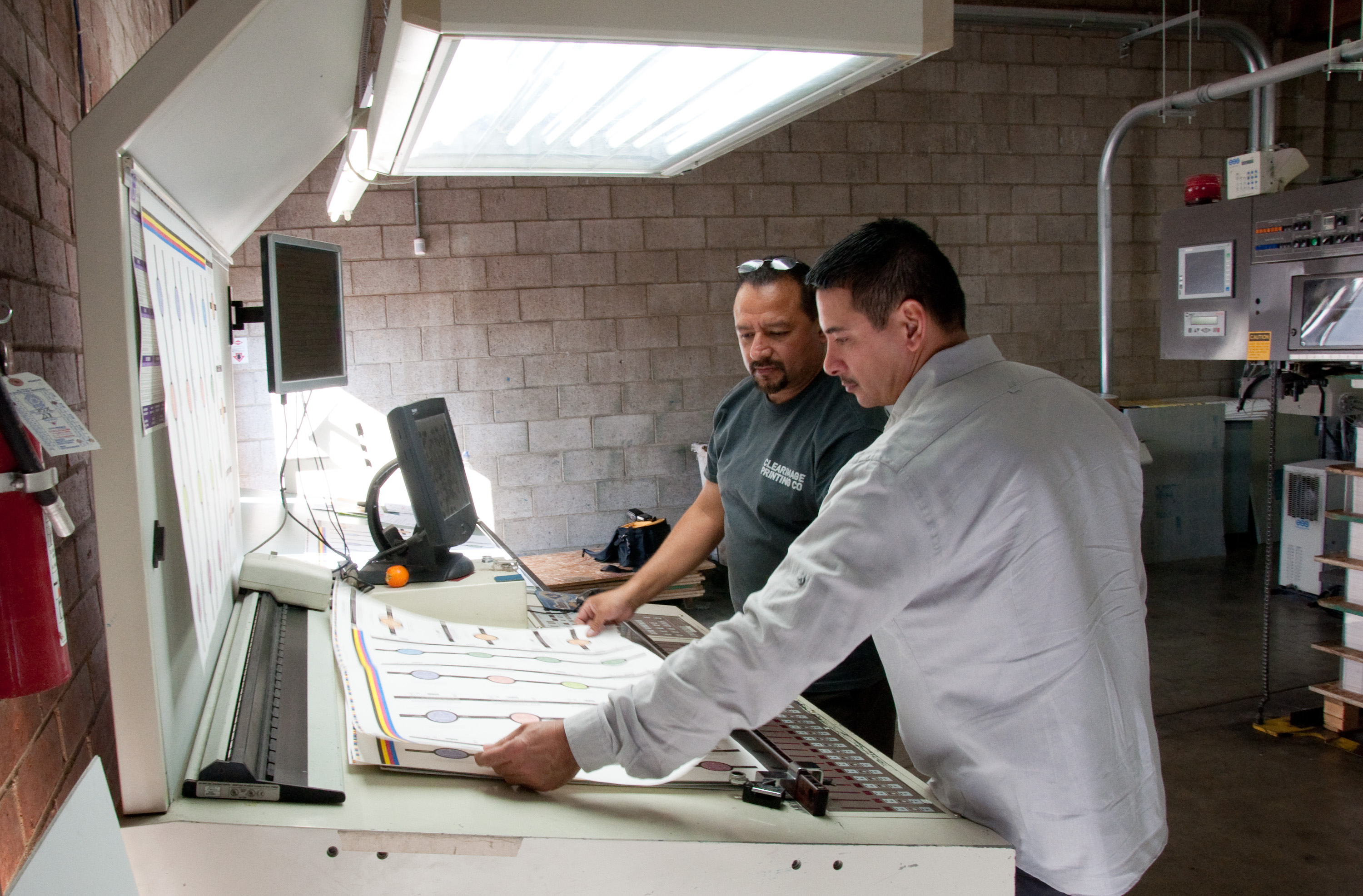
How does CIP decide which press my job goes on?
Clear Image Printing has five different offset presses. They are specified by their manufacturer’s name and either the maximum number of colors they can print or the largest size sheet of paper that can go through them:
Komori Hybrid Ultra Violet (H-UV) Six Color + Coater +Dryer 28” x 40”
Mitsubishi 3H Six Color + Coater 28” x 40”
Mitsubishi Diamond 1000LS 6 color + Coater
Ryobi 3304 Four Color 20” x 28” Small Format Printer
Ryobi 3304 Two Color 13” x 18” Small Format Printer
Why all of the different presses? Quality, timing, and cost. The ideal is to match a particular project’s specs with the exact machine that will produce great results for the lowest cost.
It might only be a 2-color brochure so the 2-color Ryobi might seem a logical choice. But the project might be too big for the 13” x 18” paper bed or it might be a print run of 100,000 which would take too long and not be cost efficient on a small machine. If a project has many different parts, some might very well be printed on one of the small format machines while other parts might need to be on our largest printer, the Hybrid UV press.
It is important to have options in-house in order to be competitive in the printing marketplace but just as importantly it enables CIP to have tight control over quality printing which is one of our core values as a company. As Clear Image Printing has grown so have its capabilities and equipment. Always looking for ways to improve, we keep a close eye on advancements in the printing industry. We carefully analyze all kinds of new printers coming on the market and when advancements offer great all-around advantages to our clients we purchase that equipment.
Such was the case with the Komori Hybrid UV. Not only does it print beautifully but the sheet comes off the press dry, enabling our customers to see exactly what the final printing looks like without having to guess as to color shifts that might occur as the ink on a sheet of paper dries. (This is commonly referred to as “dry back”.) This was certainly a capability worth having and it has proven itself worth the investment over-and-over again since it arrived in late 2015.







